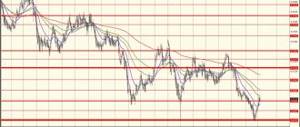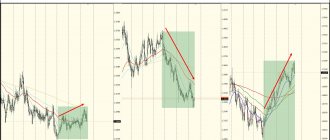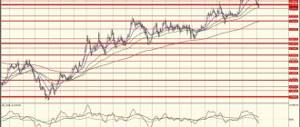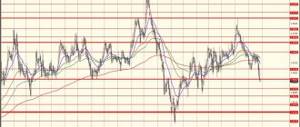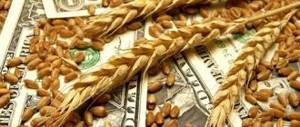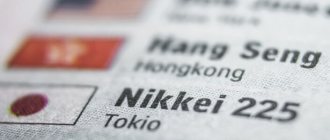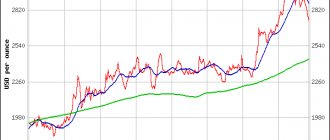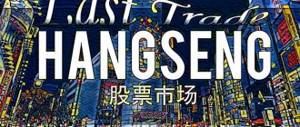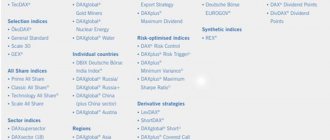Greetings! Since you are reading this topic now, it means you are interested in how to make a profit from the AUD JPY instrument.
You, of course, know that the strategy for generating income on Forex is associated with identifying the reasons why one currency is stronger than another. They are often objective and depend on the strength of the economic position of the countries whose currencies are paired.
Carry traders like to work with AUD/JPY. They make money on the difference in interest rates: they buy a currency with a higher rate for a currency with a lower one. Those. in fact, they implement the principle of buy low and sell high.
But this approach is simple in appearance and has its pitfalls. Which ones exactly? Let's figure it out together. After reading the article to the end, you will gain an understanding of pricing mechanisms, which means you will be able to build your own tactics or trading strategy.
What does the AUD JPY exchange rate depend on?
The exchange rate of the Australian dollar/Japanese yen (AUD JPY) pair, as well as other currency pairs, cryptocurrencies, etc. depends not on the news and their forecasts (this is just a reason to “drive” the currency up and down), on the Japanese or Australian economy, but on trends in the Australian dollar and yen indices . So if you see
- trends on the charts of the AUD and JPY indices, which go in one direction, then for the Australian dollar-yen currency pair one should expect either a bearish or bullish movement in the Forex market;
- If the direction of movement of these indices is directed in different directions, then a flat will be observed in the AUDJPY cross.
Example of a AUD/JPY trade
Sales tactics based on technical analysis:
- Momentum with standard settings is in the overbought zone.
- The volume is reduced or insignificant.
- Prices have reached the upper limit of the Bollinger indicator with default settings.
- The goal is immediate support.
We open sales at dollar/yen.
The goal (support within the channel) has been achieved.
Remember: the longer you are in the market, the weaker the signal and the greater the uncertainty. Of course, everyone loves trends, but they account for 30% of the market time. The remaining 70% are fluctuations in a narrow range.
Buy signals: momentum in the oversold zone, price at the lower Bollinger Band, moderate or low volume.
Selecting the best indicators for forecasting the AUD JPY exchange rate
In reality, the AUDJPY rate moves according to the levels of accumulations of market maker orders . We present a chart from the closed forum of the Masterforex-V Academy. Notice how the price moves from one MF order level to another. Only in the Masterforex-V Academy you will find data on the levels of MF orders both for the main currency pairs and for their cross rates.
We pay attention to how the MF divides into strong and secondary levels. In addition to these MF levels, we recommend placing on the charts FREE proprietary indicators developed at the Masterforex-V Academy: AO_ZOTIK (Zotik) and the WPR_VSMARK oscillator.
Do you agree that this makes it easier to understand the logic of the movements of this pair? We have shown just a few tools out of more than 30 that you will learn about during professional training in Forex and the Exchange at the MasterForex-V Academy.
Australian dollar/yen exchange rate and a number of myths from the Internet
Given that articles are constantly being published about the Forex market and about the AUD JPY rate in particular, the same dogmas are written from article to article that the AUDJPY rate is affected by:
- growth or decline in capitalization on the Australian Securities Exchange ASX and the Tokyo Stock Exchange;
- various economic (and not only) news on the economy of Australia or Japan (AUD JPY rate and “news”, and even more so their “forecasts” - everyone lives their own “life”);
- level of the S&P/ASX 200 or NIKKEI 225 indices on the stock exchanges in Sydney or Tokyo. Look at the charts of the S&P/ASX 200 and the Australian Yen for yourself, do you see how similar they are? So we don't.
In addition to the AUD and JPY indices, the AUD/JPY exchange rate is also really influenced by volumes when selling (Sell) or buying (Buy) currency futures of the Australian dollar and Japanese yen on the Chicago Mercantile Exchange CME . As a rule, there is a strong trend (impulse) in the futures The Australian dollar or yen is accompanied by growing volumes of a bullish or bearish trend and vice versa, during a correction, volumes decrease. You can read more about volume trading and the pitfalls of such trading in the articles Basics of Volume Theory and Masterforex-V on the disadvantages of volume analysis in the Forex market through CME futures (Chicago Mercantile Exchange.
For example, for Australian dollar futures 6A:
Trends in AUDJPY
Trends for the AUD JPY pair are no different from the same trends for other currency pairs. They are divided into long-term and medium-term trends.
LONG-term trends (clearly visible on timeframes from W1 and MN) continue for years. Trends begin and end with reversal patterns of the same wave level (for example, triple and double tops or bottoms, diamond or head and shoulders, etc.). Before such reversals, you can see divergences on the charts.
MEDIUM-term trends (as a rule, determined on timeframes from H8) last from a week or more. These timeframes clearly show how trends work out the MF levels - the levels of accumulations of market maker orders (see above). Real or false breakouts of levels or rebounds from these levels will indicate further movement for the week. Within such trends, patterns of continuation of movement are visible, for example, various triangles - symmetrical triangle, ascending and descending triangles, expanding triangle, etc.).
Features of the currency pair
The Japanese love to make monetary interventions. Because of this, pairs with the yen are sharp and unpredictable.
There is a joke in the market that the yen is like a monkey with a grenade - you never know where and when this grenade will fly). I can add that at this point the yen is similar to cryptocurrencies.
But there are also stable factors:
- AUD/JPY respects the boundaries of channels and corridors.
- Demonstrates reliable reversals after strong movements on declining volume.
- Shows constant corrections of 50-60% on any timeframe.
Take advantage of these patterns, but remember to place stops, especially when trading with leverage.
Trading and earnings in euros and yen
Trading only the AUD JPY pair, like any other instrument, will not bring the trader sufficient profit . Why? It’s simple to explain: the Pareto 20/80 principle also works in the market: 20% of the total movement of a currency pair is a trend, which brings up to 80% of profit to the trader, while the remaining 80% of the time the currency pair is traded in a complex flat-like movement.
Therefore, successfully trading traders of the Masterforex-V Academy choose to trade not with ONE specific instrument or not in ONE market, but in different ones. After all, a successful trader does not care about a specific market or instrument, but pays attention to the presence of a trend , which in one month can be in the Australian dollar-yen pair, in the next - in stock market indices, in the third - in cryptocurrencies, etc. and so on.
It is by working in DIFFERENT markets that you can have a constant income of 300%-700% over several years, which is confirmed by the statistics of our Rebate - auto-copying service pro-rebate.com. Passive investing in stocks, bonds, ETFs or ETP funds will not provide such returns for investors.
Recommended brokers for trading and investing in the AUD/JPY pair
According to statistics from our free autocopy rebate service pro-rebate.com, about 50% of successfully trading traders have chosen ]NordFx[/anchor], which provides the following popular tools:
- currency pairs - GBP AUD, USD SEK, EUR USD, EUR RUB, GBP USD, USD JPY, EUR SEK, USD CHF, USD CNY,GBP CHF, GBP JPY, USD CAD, AUD USD, USD RUB, USD UAH, USD BYN , USD NOK, EUR CHF, EUR JPY, EUR GBP, EUR NZD, EUR AUD, EUR CAD, EUR NOK, GBP CAD, GBP NZD, GBP SEK, GBP NOK, NZD USD, etc.;
- stock market indices FTSE 100, S&P 500, DAX 30, Dow Jones 30, NASDAQ-100 NIKKEI 225;
- CFD on oil, gold and silver;
- cryptocurrencies - BTC, ETH, ETC, BTG, XPR, LTC, EMR, EOS, NEO, DSH, OMG, IOT, ZEC, etc.;
- cryptocurrency indices - 10ALT (10 altcoins to USD), TOP14Crypt (14 cryptocurrencies to the US dollar), TOP3ALT, etc.;
- investments in investment portfolios from large global investment funds with trust management (MD) Pro-TECH Fund, Pro-Industry Fund, Pro-Expert Fund, as well as in American shares of MOTOROLA, NYSE and NASDAQ, NIKE, BOEING, FERRARI, HP INC, PFIZER, JOHNSON & JOHNSON, COCA-COLA, Microsoft, Apple, MCDONALD'S, NVIDIA, ELECTRONIC ARTS, CISCO SYSTEMS, INTEL CORP, 21 FOX, Alibaba, MASTERCARD, VISA INC, GOOGLE, FEDEX, PAYPAL, FACEBOOK, etc.
- PAMM and RAMM accounts.
The broker offers its clients
- trading platforms popular among traders are Meta Trader 4 and Meta Trader 4 Mobile with a wide list of built-in indicators and oscillators for technical analysis of charts;
- open a minimum trading account from $10;
- leverage from 1:50 to 1:1000;
- the ability to implement all types of trading strategies - from automated advisors to day trading, swing trading, scalping, etc.
- financial regulation in the European Union CySEC.
When opening a real trading account for $3,000 or more with NordFX, a trader additionally receives the opportunity to study for free at the Masterforex-V Academy for 1 year.
The rest of our traders cooperate no less successfully with 12 more companies that have entered the major league of the Forex Broker Rating - Dukascopy Bank SA, FXPro, Interactive Brokers, Alpari, Swissquote Bank SA, OANDA, FXCM, Saxo Bank Bank), FOREX.com, FIBO Group, Fort Financial Services (FortFS), Finam (Finam).
Sincerely, wiki Masterforex-V, free (school) and professional training courses Masterforex-V for working on Forex, stock, futures, commodity and cryptocurrency exchanges.
Japanese yen exchange rate
Japanese yen
is the official currency of Japan. Bank code is JPY. 1 yen is equal to 100 sen and 1,000 rin, but in 1954 all coins with denominations less than 1 yen were withdrawn from circulation. Current banknote denominations are 10,000, 5,000, 2,000 and 1,000 yen. Coins: 500, 100, 50, 10, 5 and 1 yen. The name of the currency comes from the Japanese word "en", which means "round".
The front side of Japanese banknotes depicts writers and educators: 10,000 yen - a portrait of Fukuzawa Yukichi, 5,000 - Nitobe Inazo, 2,000 - Murasaki Shikubu, and 1,000 - Natsume Soseki.
Coins differ from each other in the material of manufacture and design. Made of nickel are 500 yen (on the front side there is a paulownia flower), 100 yen (sakura) and 50 yen (chrysanthemum). A 10 yen coin depicting the Phoenix Hall of Bedoin Monastery and a 5 yen coin decorated with an ear of rice are minted in bronze. 1 yen is made of aluminum and contains a symbolic image of a sapling. On the reverse side of coins, as a rule, the denomination and year of issue are indicated. 5 and 50 yen have a hole in the center.
In its current form, the Japanese monetary system and the modern yen appeared in 1871. Before this, there were gold, silver, copper and paper banknotes, both from the central government and from 244 separate princely domains. At the first issue of a single state currency, 1 yen was equal to 1.5 grams of pure gold.
The abandonment of the gold standard in Japan occurred gradually: from 1910, the issuance of 10 Japanese yen in gold was discontinued, from 1924 - 2 and 5 yen, and from 1932 - 20 yen. In 1933, the Land of the Rising Sun finally abandoned the minting of gold coins, which was associated with the economic crisis. At the same time, Japan joined the “sterling bloc”, pegging its currency to the British pound. The outbreak of war with China led to devaluation. In 1937, the price of the yen dropped to 0.29 grams of gold.
Since 1939, Japan has reoriented the national currency from the pound to the US dollar. At the same time, the value of the yen dropped to 0.20813 grams of gold, which corresponded to 4.27 yen per dollar.
The Second World War completely destroyed the Japanese financial system. In August 1945, the dollar was already worth 15 Japanese yen, in March 1947 - 50, and in July 1948 - 250. At the same time, the yen was not freely convertible, and different exchange rates were introduced for different transactions. For some commercial transactions the price reached 900 yen per dollar.
In 1949, the American occupation administration headed by General Makarur took up the matter, bringing order to the financial sector and establishing a single parity rate of 360 yen per dollar. At the same time, the largest Japanese monopoly companies were fragmented, which served as an impetus for the development of competition and the economy as a whole.
By May 1953, the yen had become a recognized currency unit of the International Monetary Fund with a parity of 2.5 mg to gold. In 1964, without agreement with the IMF, the Japanese leadership abandoned currency restrictions, making the yen freely convertible. Successes in economic development led to a series of revaluations of the yen. By the beginning of the 1970s, it was already worth 308, in 1978 – 280 yen per dollar, and the period of greatest strengthening of the currency occurred in the mid-1980s.
Japanese stagnation began in 1991 with a series of bankruptcies of financial institutions. The Asia-Pacific crisis of 1997-1998 led to the weakening of the yen from 115 to 150 yen per dollar. However, the devaluation stimulated further development of exports, which again led to an increase in quotations. Already in 1998, the massive exodus of investors from the dollar caused a rapid rise in price of the yen from 136 to 111 within three days.
In 2002, Japan finally emerged from stagnation and a trend towards sustainable growth emerged. At the same time, the national economy is export-oriented, so the policy of the Bank of Japan is aimed at maintaining a cheap yen. To achieve this, the country introduces minimum interest rates and uses foreign exchange interventions. In 2007, a number of economists suggested that the yen was undervalued by 15% against the dollar and by 40% against the euro.
At the end of autumn 2021, the yen is hovering around 111 to the dollar, close to its historically highest price since World War II. One euro can be bought for 131.5 yen, and one Russian ruble for 1.9 yen.
The Japanese yen ranks third in the world in foreign exchange reserves after the US dollar and the euro. The Bank of Japan is responsible for issuing currency and conducting monetary policy.
The value of the yen is determined primarily by the high level of production in Japan - the country ranks third in the world in terms of gross domestic product after the United States and China, as well as a positive trade balance and negative (-0.7% in 2010) inflation. At the same time, the Japanese economy depends on the import of raw materials and energy resources, as well as on the demand for exported goods: electronics, cars, etc.
The yen quote on the Forex market and in exchange offices is direct - it indicates how many yen you need to pay for 1 US dollar, that is, it is calculated in the same way as the ruble exchange rate.
